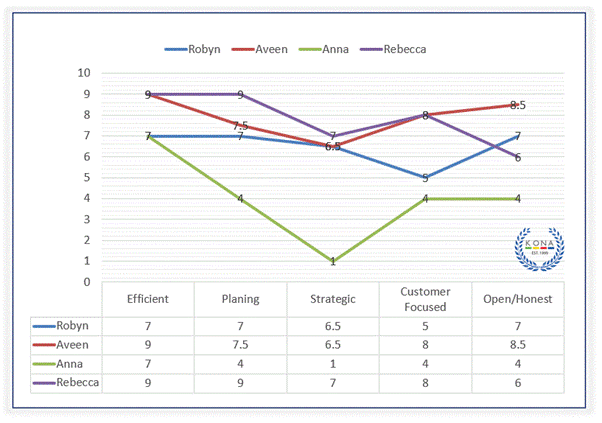
If you’re leading a sales team and don’t yet have a Leadership Charter, you’re probably flying blind—and so is your team. Sales leadership isn’t just about hitting numbers or rallying the troops with a Monday morning pep talk. It’s about setting clear expectations, defining your leadership values, and aligning your team with a shared mission. That’s where a Leadership Charter comes in.
We’ll break down what a Leadership Charter is, why it’s critical for sales leaders, and how it can transform your team’s performance and culture.
What Exactly Is a Leadership Charter?
A Leadership Charter is a written declaration of who you are as a leader, how you lead, what you expect from your team, and what your team can expect from you. Think of it as your leadership “compass” — a way to set the direction and tone for your team.
It typically includes:
- Your leadership purpose or philosophy
- Core values that guide your decisions
- Expectations for behaviour, communication, and accountability
- Commitments you make to your team
- How you’ll handle challenges and conflict
It’s a practical document that grounds your leadership in clarity and intention.

Why Sales Leaders Can’t Afford to Skip This
It’s no secret that sales is high-pressure. Quotas, pipeline management, customer demands, and team dynamics can create chaos if left unchecked. Without a Leadership Charter, your team is left guessing what matters most to you.
Here’s why top-performing sales leaders rely on a Leadership Charter:
1. Clarity Creates Confidence
When your team knows exactly what you stand for and how you operate, it removes ambiguity. They’re not left wondering what will get them praise vs. what will get them pulled up in a one-on-one. Clarity builds trust — and trust builds results.
2. Consistency in Leadership
Sales leaders often have to make fast decisions. A Leadership Charter acts as your leadership filter — helping you make consistent calls that align with your core values. That consistency helps reduce confusion and second-guessing from your team.
3. Alignment Drives Accountability
When your expectations are clearly documented and shared, it’s easier to hold your team (and yourself) accountable. It’s not about micromanagement — it’s about alignment. Everyone knows the rules of engagement.
4. Improves Culture and Morale
A strong Leadership Charter includes how you treat people, celebrate wins, and handle setbacks. It sets the tone for your team culture. And when culture is strong, morale — and performance — follows.
5. Onboarding Gets Easier
Hiring new salespeople? Instead of repeating your leadership style in every onboarding call, your Leadership Charter does the heavy lifting. It gives new team members a fast-track to understanding what matters in your world.

“Okay… But Is It Worth the Time?”
Yes — 100%.
Creating your Leadership Charter might take a few focused hours, but the ROI is massive. It’s one of those high-leverage leadership tools that continues to pay off over time.
And here’s the thing: most sales leaders think they’ve already communicated their expectations and values. But unless it’s written down, revisited, and discussed, it’s just noise. A Leadership Charter makes it concrete.
Ready to Lead With Intent?
If you’re serious about elevating your leadership game — and your sales results — creating a Leadership Charter is a no-brainer. It’s the foundation for trust, performance, and a thriving team culture.
At KONA, we help sales leaders craft Leadership Charters that reflect their authentic style while driving real results. Whether you have an experienced leadership team or new leaders stepping into their first leadership roles, we can guide your team through the process with proven tools and coaching. To find out more about why you need a team leadership charter, click here.
📞 Want help building your own Leadership Charter?
Contact KONA today for tailored Sales & Leadership Training that turns good managers into great leaders.
Call 1300 611 288 or Email info@kona.com.au to get started!















































































